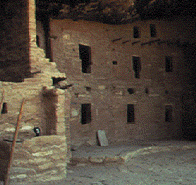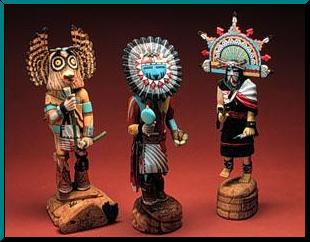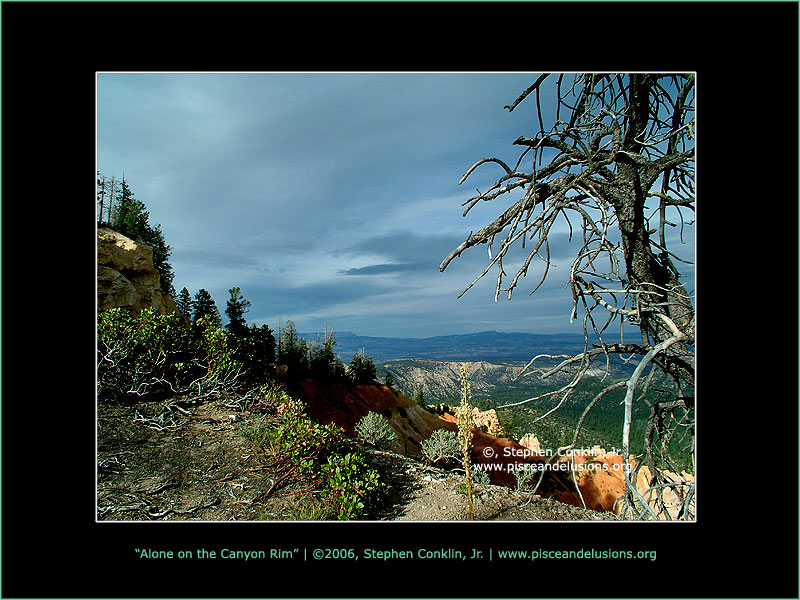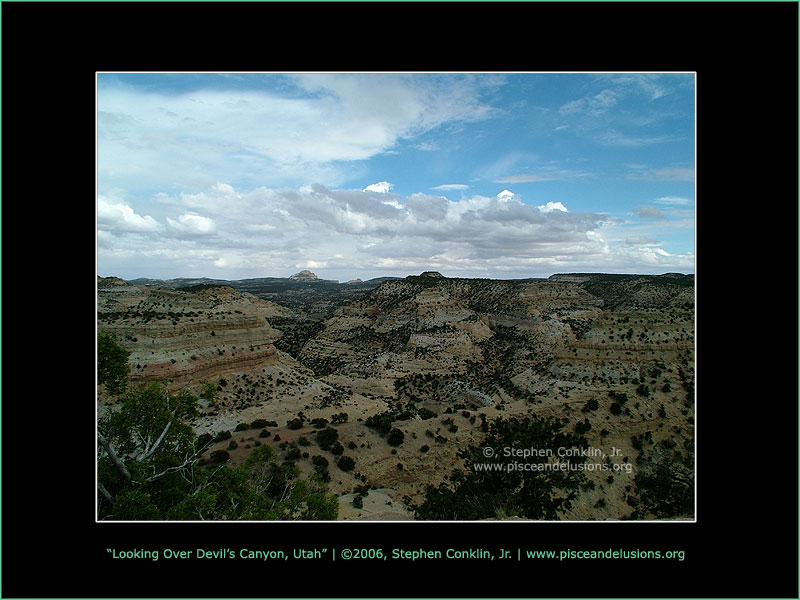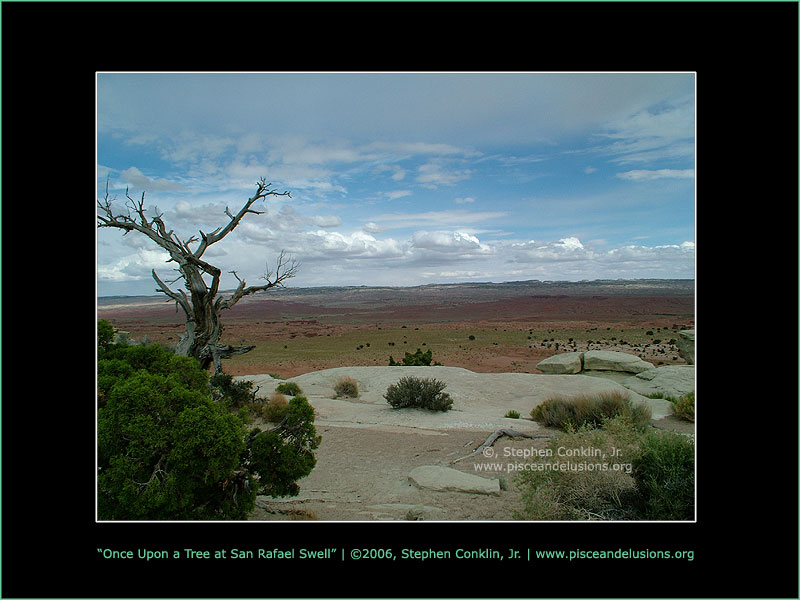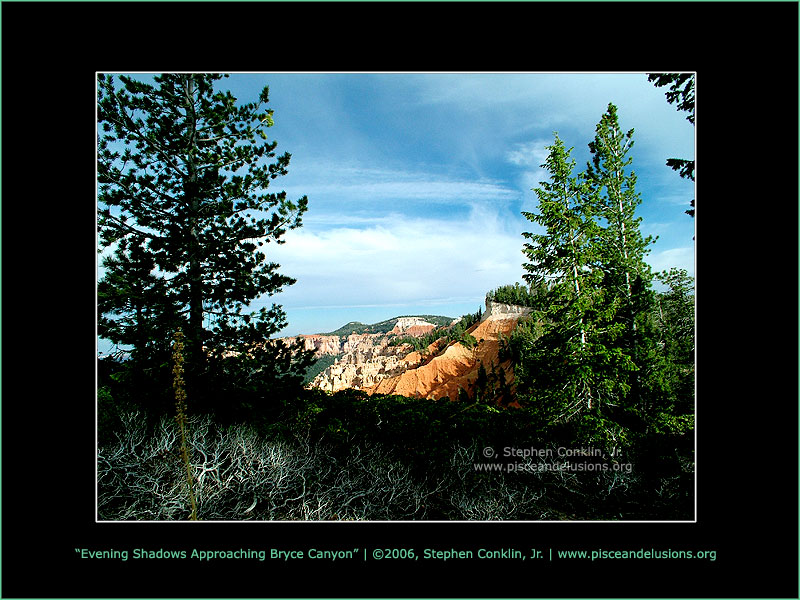
Interpretations - Sacred Knowledge - Native American Indians - Southwest Culture
The Southwest Culture The Southwest Culture was very different from the Plains Culture. Because the climate of the Southwest is very dry, much of the land is a desert. Water is an extremely valueable resource in this kind of environment, and very little plants can grow under these conditions. The Indians in this culture had strict rules about the use of water. Even the very young children were taught to be careful with the water they used. There were very few animals in the desert. This meant that the Indians could not depend on hunting to find food. They had to find other ways to get food. They became farmers. Some important Southwest Culture tribes are the Anasazi, Hopi, Pueblo, and Navajo. Anasazi indians The Anasazi Indians lived over 1,000 years ago. The Anasazi built their homes in a special place. The land in the Southwest was very different from the Great Plains. Instead of wide open land, the Southwest is made of uneven land with canyons and mesas (ma' suz). A mesa is a landform that is made of rock, and that is shaped like a high flat table. In fact, the word mesa is the Spanish word for table. The Anasazi built their homes into the side of the mesa. For this reason, they were also called the Cliffdwellers. The buildings that the Anasazi lived in looked like large apartment buildings. These buildings had over 200 rooms, and more than 400 people lived there.
The Anasazi built their buildings with stone. Remember that the Indians used the natural resources around them for their basic needs. Because of the stone mesas, there was an abundance of stone to use for their homes. In between the stones they put mud to hold the stones together. They had square windows but no doors. The Anasazi entered their homes by climbing a ladder and going through a hole in the roof. They could then bring the ladders inside their homes to keep out unwanted visitors. Each family had at least two rooms of its own. If a family was large, it had more rooms. Rooms were sometimes built on top of other rooms as the family grew. There were also rooms shared by all the people in the community. The Anasazi were farmers. They lived at the base, or bottom, of the mesa, but they farmed on the top of the mesa. This gave the mesa a green appearance. For this reason, the community that the Anasazi lived in was called Mesa Verde. Verde is the Spanish word for green. Mesa Verde meant green table. The Anasazi grew corn, beans, and squash. They also tamed wild turkeys for meat. They used their feathers to make their blankets and clothing warmer. In order to reach the top of the mesa to farm it, the Anasazi had to climb the steep mesa. They carved small toe and finger holes into the side of the cliff. In this way, they were able to climb up and down the mesa carrying heavy burdens. Water was very precious to the Southwestern Indians. Because they lived in the desert, they had very little rainfall. When it did rain, the Anasazi would store their water in ditches. They built gates at the end of the ditches that could be raised and lowered to let water out. They used this to water their crops in the field. The people of the Anasazi village were very busy. The men and women would plant, weed, and water the crops. The women would make beautiful pots out of clay. They also made baskets, some woven so tightly that they held water. The men would carry water to the top of the mesa. They also used stones to sharpen tools. Even the children had jobs. Some would grind corn using smooth round stones. Others would look after the younger children. When they did have time, they children enjoyed playing tag. The Anasazi men went to a special room for religious ceremonies. This special room was called a kiva. (keeva) A kiva was a round room built underground at the base of the homes. Only men were allowed into the kiva. To get in and out the men had to go by ladder through the roof. There were paintings of gods around the walls and a mysterrious hole in the floor. This hole was to remind the Indians that their first ancestors, relatives that lived long ago, came from the belly of the earth. The men would pray to the Great Spirit for things such as rain, good harvests, etc. The Anasazi left Mesa Verde suddenly. The Indian village soon became forgotten. Then in l888, two cowhands that were chasing some stray cattle accidentally discovered the ruins of Mesa Verde. Ruins are the remains of very old buildings. Since then the buildings have been repaired to look as they did when the Anasazi lived there. Mesa Verde is now a national park. A national park is land set aside for all the people of a country to enjoy.
Pueblo Indians Pueblo Indians are Indians who live in stone or adobe, dried clay, houses. This is not the name of a certain tribe of Indian. It is the name given to any Indian tribe that lives in the Southwest and lives in this type of home. The Anasazi were Pueblo Indians because they built their homes out of stone and clay. The Hopi are also Pueblo Indians. Calling these Indians Pueblo Indians would be like calling the Plains Indians Tepee Indians because they lived in tepees. Hopi Indians The Hopi Indians have lived in the same area of the Southwest since before the time of Columbus. They lived in what is now Arizona. They lived on desert land at the foot of the mesas. The Hopi Indians believed in many gods. The Hopi used Kachinas to talk to their gods. Kachinas were Hopi spirits or gods which lived within the mountains. Hopi dancers would dress like Kachinas to represent, or stand for, the gods. Wooden Kachina dolls were made to teach the children about the gods. The Hopi believed the Kachina costume gave magic power to the man who wore it. They felt a man needed magic to talk to the gods. Hopi Kachinas talked to the gods by singing and dancing. The Kachinas danced and sang for rain. They did their dances over and over. Sometimes the gods did not seem to hear the Kachinas, and it would not rain for weeks. At other times the gods seemed to hear the Kachinas right away, for it would rain and rain.
When it rained hard, the rain would run down the mesas forming little paths. The Hopi would plant corn in the paths that the running water took. Like the Anasazi, the Hopi grew corn, beans, and squash. But the Hopi Indians depended on the rain to make their crops grow. If their plants did not grow, the Hopi might starve. The Hopi also planted cotton and tamed wild turkeys. Hopi Indians built their houses out of stone with clay plastered on the outside and inside. There were no doors or windows. The Hopi entered their homes through a hole in the ceiling with ladders. Hopi Indians of today live in the same type of homes, but now have doors and windows. Hopi children almost never had to be punished. If they were bad, they were talked to. If they were very, very bad, the men would dress up as a Scare Kachina to frighten them. The men would wear scary masks with long teeth and popping eyes. They would scare the children but never hurt them.
"Alone on the Canyon Rim" | ©2006, Stephen Conklin, Jr. view larger size | order online
"Looking Over Devil's Canyon, Utah" | ©2006, Stephen Conklin, Jr. view larger size | order online
"Once Upon a Tree at San Rafael Swell" | ©2006, Stephen Conklin, Jr. view larger size | order online
"Evening Shadows Approaching Bryce Canyon" | ©2006, Stephen Conklin, Jr. view larger size | order online
|
||||||||||
©2002-2024, ~piscean ♓ delusions | page updated 10-8-2010, 1:41 pm |
| store |
art & design
|
| photo gallery |
| image gallery |
| video gallery |
| website gallery |
about pisces |
| pisces traits |
| pisces profile |
| pisces astrochart |
| pisces ruling house |
| pisces ruling planet |
| pisces quality |
| pisces element |
interpretations |
| sacred knowledge |
| mystical places |
| spiritual elements |
| further resources |
everything else |
| about this website |
| other website links |
| videogame break |
| guestbook |
| contact |
